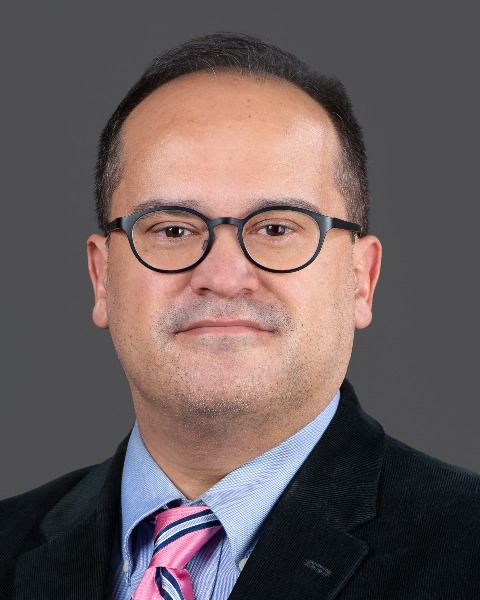HPB
49: A Prospective Evaluation of a Modified Hepatic Arterial Infusion Floxuridine Reduced-Dose Protocol for Patients with Unresectable Colorectal Liver Metastases

Issac R. Schwantes, MD
Resident Physician
Oregon Health & Science University (OHSU), Department of Surgery, Division of Surgical Oncology, Knight Cancer Institute, Portland, OR 97239 USA, United States
Issac R. Schwantes, MD
Resident Physician
Oregon Health & Science University (OHSU), Department of Surgery, Division of Surgical Oncology, Knight Cancer Institute, Portland, OR 97239 USA, United States
Issac R. Schwantes, MD
Resident Physician
Oregon Health & Science University (OHSU), Department of Surgery, Division of Surgical Oncology, Knight Cancer Institute, Portland, OR 97239 USA, United States
Skye C. Mayo, MD MPH (he/him/his)
Associate Professor
Department of Surgery, Division of Surgical Oncology, Oregon Health & Science University; Knight Cancer Institute; Portland, OR 97239 USA
Portland, Oregon, United States
Ranish K. Patel, MD
Resident Physician
Oregon Health & Science University (OHSU), Department of Surgery, Division of Surgical Oncology, Knight Cancer Institute, Portland, OR 97239 USA
Portland, Oregon, United States
Adel Kardosh, MD PhD
Professor
Department of Medicine, Division of Hematology and Medical Oncology, Knight Cancer Institute, Portland, OR 97239 USA, United States- JP
Jillian Paxton, PharmD
Clinical Pharmacist
OHSU, Department of Pharmacy Services, Portland, OR 97239 USA, United States - RE
Robert Eil, MD
Assistant Professor
Oregon Health & Science University (OHSU), Department of Surgery, Division of Surgical Oncology, Knight Cancer Institute, Portland, OR 97239 USA, United States - EC
Emerson Chen, MD
Assistant Professor
Department of Medicine, Division of Hematology and Medical Oncology, Knight Cancer Institute, Portland, OR 97239 USA, United States 
Flavio G. Rocha, MD
Professor
Oregon Health & Science University (OHSU), Department of Surgery, Division of Surgical Oncology, Knight Cancer Institute, Portland, OR 97239 USA
Portland, Oregon, United States- EL
Emile J. Latour, MS
Biostatistician
Biostatistics Shared Resource, Knight Cancer Institute, Portland, OR 97239 USA, United States - GP
Guillaume Pegna, MD
Assistant Professor
Department of Medicine, Division of Hematology and Medical Oncology, Knight Cancer Institute, Portland, OR 97239 USA, United States - CL
Charles Lopez, MD PhD
Professor
Department of Medicine, Division of Hematology and Medical Oncology, Knight Cancer Institute, Portland, OR 97239 USA, United States
Abstract Presenter(s)
Submitter(s)
Author(s)
The majority of patients treated on a standard dosing protocol (SDP) of HAI floxuridine with dexamethasone require dose holds and reductions thereby limiting their HAI therapy. We hypothesized a modified dosing protocol (MDP) with a reduced floxuridine starting dose would decrease biliary toxicity, allow more consecutive doses of HAI, and have similar potential to convert patients with unresectable colorectal liver metastases (uCRLM) to resection as an SDP.
Methods:
We reviewed our prospectively maintained institutional database of patients with uCRLM treated between 2016 and 2022 treated with HAI. Starting in August 2019, we modified the floxuridine starting dose to 50% (0.06 mg/kg/day) of the SDP (0.12 mg/kg/day) delivered over 14 days. We compared treatment related outcomes between the SDP and MDP cohorts.
Results:
Of 33 patients, 15 were treated on the standard protocol and 18 with our institutional MDP (Figure). There was no difference in median age (53 v. 50 years), bilateral liver disease (100% v. 94%), mean number of liver lesions (5 v. 6), or synchronous disease (100% v. 94%) between the cohorts (all P >0.05). The groups were similar in the number systemic chemotherapy cycles prior to HAI (median 10 v. 13), the proportion starting HAI within 3 weeks of pump placement (40% v. 56%), and preoperative use of bevacizumab (73% v. 78%) (all P >0.05). The MDP cohort received more intended full-dose HAI cycles (81% v. 49%), completed more HAI cycles before a dose reduction (median 4.5 v. 1.0), and were treated with more HAI cycles (8.2 v. 5.4) (all P< 0.02). Patients in the SDP had more dose reductions (1.4 v. 0.61 events) and were more likely to experience dose holds (60% v. 22%) (both P< 0.05). Patients in the MDP received mean of 39 more days of active HAI floxuridine infusions compared to patients in the SDP cohort (P=0.02). In bivariate analyses, treatment on a MDP was independently associated with no dose holds or reductions during treatment course (OR 9.1) and a longer time on HAI treatment on Kaplan-Meier analysis (both P< 0.02). Three patients (20%) were converted to resection in the SDP compared to 6 patients (33%) in the MDP group. Four patients (27%) in the SDP experienced HAI treatment ending biliary toxicity compared to 1 patient (6%) in the MDP.
Conclusions:
A 50% starting dose of HAI floxuridine allows for fewer treatment disruptions, more consecutive floxuridine cycles delivered, and less biliary toxicity with a similar potential to convert to hepatic resection for complete disease clearance.
Learning Objectives:
- Describe the benefits a dose-reduced protocol of hepatic arterial infusion of floxuridine provides compared to standard dose protocol in the treatment of patients with unresectable colorectal liver metastasis
- Discuss the difference in biliary toxicity between a dose-reduced protocol of floxuridine compared to the standard floxuridine dosing protocol.
- Identify patients in their own practice with unresectable colorectal cancer liver metastases hat may potentially benefit from HAI floxuridine therapy.
